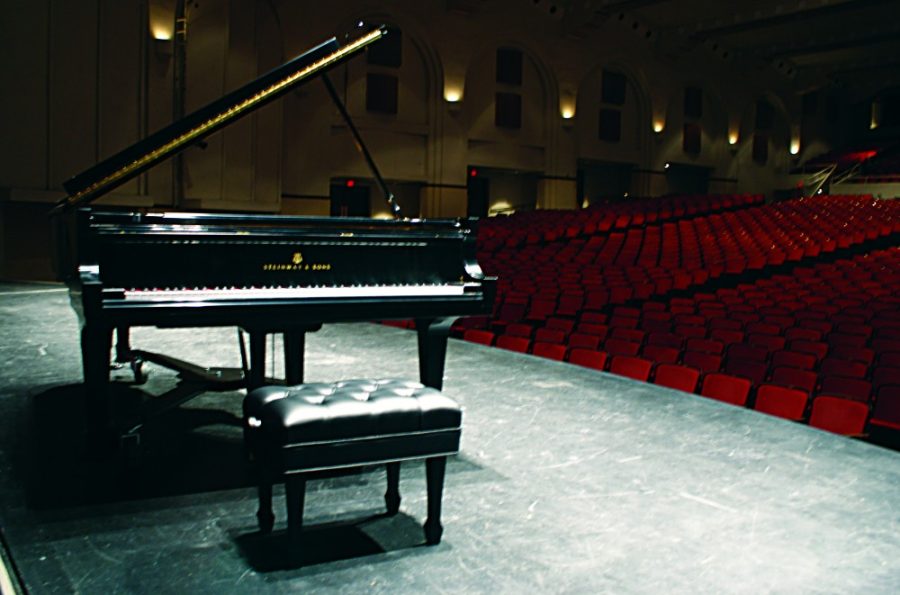Last week Centennial Hall welcomed a brand new piano thanks to the largest donation in the history of UApresents made by the Margaret E. Mooney Foundation.
Over the summer, Chuck Tennes, executive director of UApresents, along with associate professor John Milbauer from the School of Music and John Simon, Tucson Steinway Gallery owner, traveled to the Steinway & Sons Factory in Queens, N.Y. to choose a new concert grand piano for Centennial Hall. After becoming executive director in August 2011, Tennes made attaining a new piano one of his top priorities.
“It’s something I heard right from the beginning,” Tennes said. “The piano we had … has seen better years. Pianos, especially in an institutional setting, have a somewhat limited life.”
Six months ago, Tennes received a check from the Margaret E. Mooney foundation in Tucson that was designated for the purchase of a new piano for the university’s music hall. Linda Lohse, a member of the foundation, said, “Mrs. Mooney was interested in the arts and we thought that this was a perfect way to remember her.”
The donation funded the trip to New York and allowed Tennes, Milbauer and Simon access to several different types of concert grand pianos and, after several tests, they chose the Model D Concert Grand Piano, a product which, Simon said, is valued at $142,000.
Simon added that there is a method behind choosing the right piano for the right setting.
“You choose one that is just going to be flexible,” he said. “You want to have a lot of character, a lot of personality, something that’s going to work for a lot of different kinds of players.”
According to Simon, the Model D is the largest and most expressive of the Steinways, which will allow for greater satisfaction with performing guest artists.
“It has a flawless regulation; it’s flawlessly even, in terms of the touch,” said Milbauer, “This is very beautifully weighted from bottom to top and that’s rare, so it’s a real treat.”
Steinway pianos have been a long-esteemed product in the music world. The company began in 1853 in Manhattan and has since expanded to countries all over the world.
“Steinway & Sons is pretty widely recognized as the gold standard when it comes to pianos,” said Tennes. “We’re talking about carpentry, a lot of precision work, the steel frames, the strings, etcetera. All of those components are built and assembled in a very traditional factory setting.”
The true test of this piano, Milbauer said, will be seen after it has been tuned and adjusted to Centennial Hall.
“It’s gone from very tightly regulated humidity in New York to huge range of humidity in Centennial,” Milbauer added. “The pianos always freak out when you put them in a new place so I’m curious what that piano’s going to sound like in two years, but I’m very happy with how it sounds now.”
Simon is confident that the new Steinway will last 50 to 75 years, ultimately reducing the price per year of the piano as compared with the upkeep of mass-produced pianos. In addition to the stability it will provide, the new piano will grant visiting artists with something they haven’t had before — a choice.
The Model D will work side by side with the former piano and provide artists with options for what type of sound they wish to have.
“It’s good to have a spare and it’s good to have a choice,” Tennes said.
The new piano is set to debut Oct. 22, when renowned pianist Lang Lang performs at Centennial Hall.









